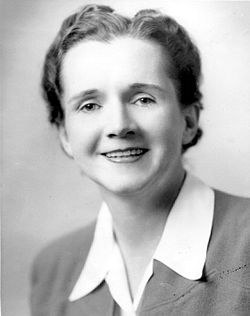Portal:Appalachia
Appalachia Portal Appalachia (locally /ˌæpəˈlætʃə/) is a geographic region located in the central and southern sections of the Appalachian Mountains in the eastern United States. In the north, its boundaries stretch from the western Catskill Mountains of New York, continuing south through the Blue Ridge Mountains and Great Smoky Mountains into northern Georgia, Alabama, and Mississippi, with West Virginia near the center, being the only state entirely within the boundaries of Appalachia. In 2021, the region was home to an estimated 26.3 million people. Since its recognition as a cultural region in the late 19th century, Appalachia has been a source of enduring myths and distortions regarding the isolation, temperament, and behavior of its inhabitants. Early 20th-century writers often engaged in yellow journalism focused on sensationalistic aspects of the region's culture, such as moonshining and clan feuding, portraying the region's inhabitants as uneducated and unrefined; although these stereotypes still exist to a lesser extent today, sociological studies have since begun to dispel them. Appalachia is endowed with abundant natural resources, but it has long struggled economically and has been associated with poverty. In the early 20th century, large-scale logging and coal mining firms brought jobs and modern amenities to Appalachia, but by the 1960s the region had failed to capitalize on any long-term benefits from these two industries. Beginning in the 1930s, the federal government sought to alleviate poverty in the Appalachian region with a series of New Deal initiatives, specifically the Tennessee Valley Authority (TVA). The TVA was responsible for the construction of hydroelectric dams that provide a vast amount of electricity and that support programs for better farming practices, regional planning, and economic development. (Full article...) Article of the dayRachel Louise Carson (May 27, 1907 – April 14, 1964) was an American marine biologist, writer, and conservationist whose sea trilogy (1941–1955) and book Silent Spring (1962) are credited with advancing marine conservation and the global environmental movement. Carson began her career as an aquatic biologist in the U.S. Bureau of Fisheries, and became a full-time nature writer in the 1950s. Her widely praised 1951 bestseller The Sea Around Us won her a U.S. National Book Award, recognition as a gifted writer, and financial security. Its success prompted the republication of her first book, Under the Sea Wind (1941), in 1952, which was followed by The Edge of the Sea in 1955 — both were also bestsellers. This sea trilogy explores the whole of ocean life from the shores to the depths. Late in the 1950s, Carson turned her attention to conservation, especially some problems she believed were caused by synthetic pesticides. The result was the book Silent Spring (1962), which brought environmental concerns to an unprecedented share of the American people. Although Silent Spring was met with fierce opposition by chemical companies, it spurred a reversal in national pesticide policy, which led to a nationwide ban on DDT and other pesticides. It also inspired a grassroots environmental movement that led to the creation of the U.S. Environmental Protection Agency. Carson was posthumously awarded the Presidential Medal of Freedom by President Jimmy Carter. (Full article...) Did you know...
Largest cities in Appalachia
Cities with at least 50,000 persons inside city boundaries as of 2020 shown Image of the dayNo image is currently selected for this date This day in historyRelated portalsCategoriesWikiProjectsStates, may have task forces:
Associated WikimediaThe following Wikimedia Foundation sister projects provide more on this subject:
SourcesDiscover Wikipedia using portals |

























